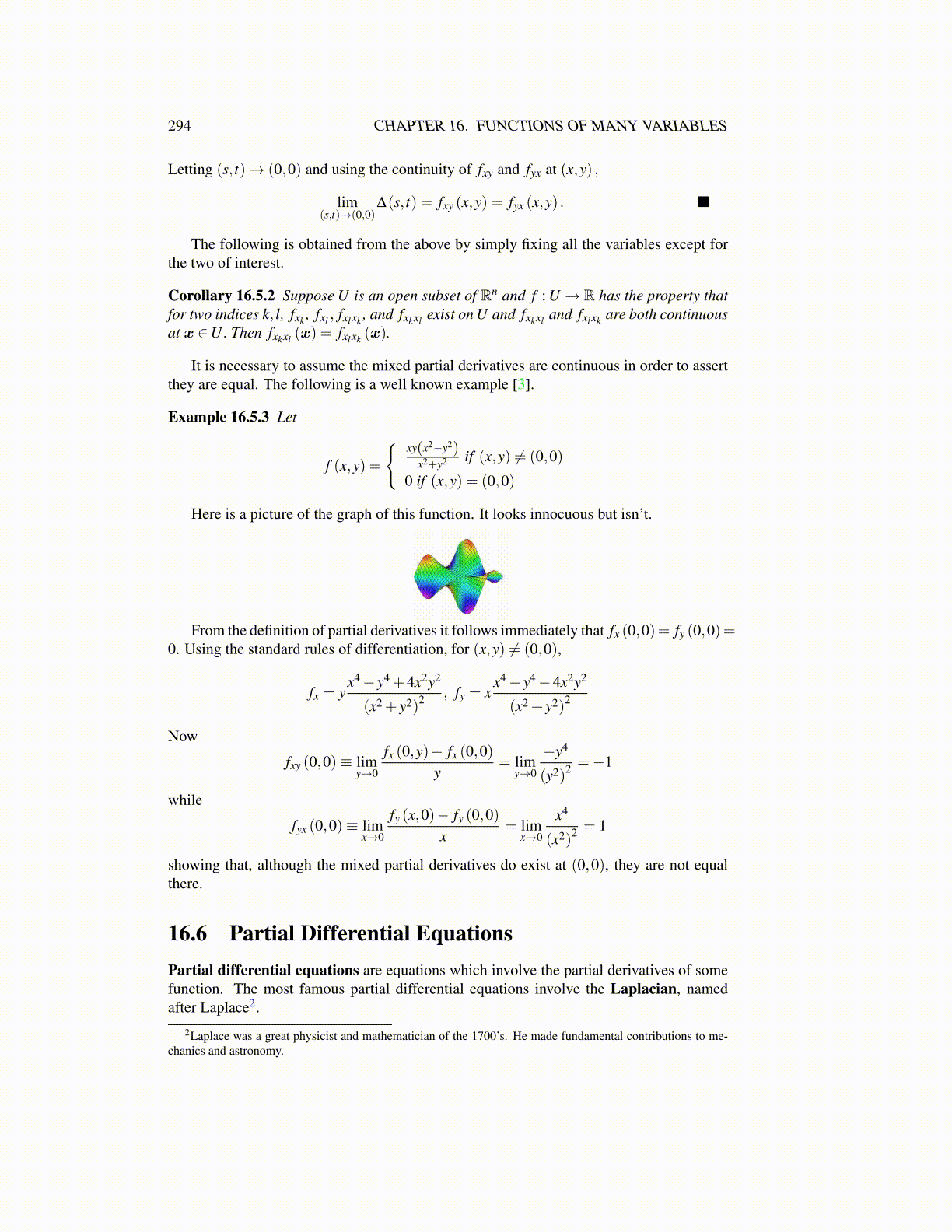
294 CHAPTER 16. FUNCTIONS OF MANY VARIABLES
Letting (s, t)→ (0,0) and using the continuity of fxy and fyx at (x,y) ,
lim(s,t)→(0,0)
∆(s, t) = fxy (x,y) = fyx (x,y) . ■
The following is obtained from the above by simply fixing all the variables except forthe two of interest.
Corollary 16.5.2 Suppose U is an open subset of Rn and f : U → R has the property thatfor two indices k, l, fxk , fxl , fxlxk , and fxkxl exist on U and fxkxl and fxlxk are both continuousat x ∈U. Then fxkxl (x) = fxlxk (x).
It is necessary to assume the mixed partial derivatives are continuous in order to assertthey are equal. The following is a well known example [3].
Example 16.5.3 Let
f (x,y) =
{xy(x2−y2)
x2+y2 if (x,y) ̸= (0,0)
0 if (x,y) = (0,0)
Here is a picture of the graph of this function. It looks innocuous but isn’t.
From the definition of partial derivatives it follows immediately that fx (0,0)= fy (0,0)=0. Using the standard rules of differentiation, for (x,y) ̸= (0,0),
fx = yx4− y4 +4x2y2
(x2 + y2)2 , fy = xx4− y4−4x2y2
(x2 + y2)2
Now
fxy (0,0)≡ limy→0
fx (0,y)− fx (0,0)y
= limy→0
−y4
(y2)2 =−1
while
fyx (0,0)≡ limx→0
fy (x,0)− fy (0,0)x
= limx→0
x4
(x2)2 = 1
showing that, although the mixed partial derivatives do exist at (0,0), they are not equalthere.
16.6 Partial Differential EquationsPartial differential equations are equations which involve the partial derivatives of somefunction. The most famous partial differential equations involve the Laplacian, namedafter Laplace2.
2Laplace was a great physicist and mathematician of the 1700’s. He made fundamental contributions to me-chanics and astronomy.